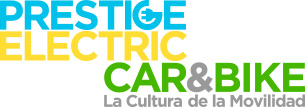El Dr. Peter Harrop nos acerca nuevamente uno de sus afilados análisis sobre el futuro del vehículo eléctrico en todo su conjunto. En las previsiones hay para todos los gustos, pero los expertos de ID TechEx llevan muchos años observando los mercados y suelen acertar muy bien, por lo menos a corto plazo, ya que a plazo largo nadie sabe hacía donde vamos.
How is it that some analysts put pure-electric car sales at hundreds of thousands in 2012 whereas others report a mere 60-65,000? At analysts IDTechEx, we feel that a lack of rigor is largely to blame because there are cars homologated as such and car-like vehicles that are not homologated as cars. The contrast is stark. Only 65,000 true pure-electric cars, homologated as such, were sold globally in 2012, very much a failure compared to the 1.522 million hybrid electric cars sold. However, car-like vehicles not homologated as cars, but competing with them, have now also come center stage and IDTechEx reflects this by making them a separate forecasting category in its reports for the first time this year.
Some car-like vehicles become very popular
They go under many names and have many sub-categories but, in the past, the only car-like electric vehicles of any significance that are not homologated as cars and have sold in any quantity have been golf cars (golf carts). All analysts leave those out of their car statistics. Highly profitable and with about 80% of sales controlled by two US manufacturers they are used very little beyond the US. The golf market is saturated. On the other hand, a $5.2 billion business is being created by 2023 for other car-like vehicles with completely different manufacturers, territories of interest and in being on-road rather than off-road.
The new success is the car-like Micro EVs, classified as "quadricycle" in Europe, where the Renault Twizy at the top of this market sold in thousands on launch in 2012. It is a lot of money to pay for a vehicle little bigger than a quad bike and with no windows, but this is really a fun product rather than a car replacement. However, in sales volume and potential, it is a sideshow compared with the larger Micro EVs in the developing nations. These are getting the biggest orders and IDTechEx expects a robust increase in sales to a projected global demand of three million units in 2023.
E-Trikes up faster than NEVs
Sub-categories underwriting this remarkable growth in sales of Micro EVs include e-Trikes and here we are talking about on-road taxis, not just private car-like vehicles. This also overtakes another, older car-like sector - Neighborhood Electric Vehicles (NEVs) - relatively expensive enclosed micro-cars not allowed on main highways but only in such things as gated residential communities in the USA. Leaders here were Global Electric Motorcars (GEM) with an ugly duckling design that failed to sell more than tens of thousands over more than a decade and ZAP. GEM was sold to Polaris Industries, who seem to think that better engineering and promotion may do the trick.
How is it that some analysts put pure-electric car sales at hundreds of thousands in 2012 whereas others report a mere 60-65,000? At analysts IDTechEx, we feel that a lack of rigor is largely to blame because there are cars homologated as such and car-like vehicles that are not homologated as cars. The contrast is stark. Only 65,000 true pure-electric cars, homologated as such, were sold globally in 2012, very much a failure compared to the 1.522 million hybrid electric cars sold. However, car-like vehicles not homologated as cars, but competing with them, have now also come center stage and IDTechEx reflects this by making them a separate forecasting category in its reports for the first time this year.
Some car-like vehicles become very popular
They go under many names and have many sub-categories but, in the past, the only car-like electric vehicles of any significance that are not homologated as cars and have sold in any quantity have been golf cars (golf carts). All analysts leave those out of their car statistics. Highly profitable and with about 80% of sales controlled by two US manufacturers they are used very little beyond the US. The golf market is saturated. On the other hand, a $5.2 billion business is being created by 2023 for other car-like vehicles with completely different manufacturers, territories of interest and in being on-road rather than off-road.
The new success is the car-like Micro EVs, classified as "quadricycle" in Europe, where the Renault Twizy at the top of this market sold in thousands on launch in 2012. It is a lot of money to pay for a vehicle little bigger than a quad bike and with no windows, but this is really a fun product rather than a car replacement. However, in sales volume and potential, it is a sideshow compared with the larger Micro EVs in the developing nations. These are getting the biggest orders and IDTechEx expects a robust increase in sales to a projected global demand of three million units in 2023.
E-Trikes up faster than NEVs
Sub-categories underwriting this remarkable growth in sales of Micro EVs include e-Trikes and here we are talking about on-road taxis, not just private car-like vehicles. This also overtakes another, older car-like sector - Neighborhood Electric Vehicles (NEVs) - relatively expensive enclosed micro-cars not allowed on main highways but only in such things as gated residential communities in the USA. Leaders here were Global Electric Motorcars (GEM) with an ugly duckling design that failed to sell more than tens of thousands over more than a decade and ZAP. GEM was sold to Polaris Industries, who seem to think that better engineering and promotion may do the trick.
Attention moves to developing nations
However, the biggest and most immediate potential for car-like vehicles, not homologated as cars, is with much lower-cost vehicles for the underdeveloped nations, not the USA. Let us look at what we mean by all these vehicles, wholeheartedly embraced by the developing nations while the developed world is ambivalent about them, some countries having banned them as unsafe.
Transition product with consistent encouragement
Let us look more closely at the global scene; particularly in East Asia and notably China, car-like micro vehicles are becoming very popular since they bridge the gap between owning an electric bike and affording a mainstream car. A few years ago the Chinese government demanded that all car manufacturers have a green model in their range and a Micro EV was the easiest way of making one. Across the world they are typically exempt from some or all of the following: car driver´s license (driving test) though the driver may need a motorcycle driving license or be 14 years old, no homologation or even crash testing, no insurance or a lower cost version, no road tax or parking charges. However, there is no standardisation of these requirements across the world and it may never occur.
Dr Pietro Perlo of IFEVS and former Director of FIAT research writes of Micro EV/quadricycles that, "They do not require ABS-EPS systems and can be homologated by much simpler and quicker procedures than those required by classical M1 vehicles. The design is typically reduced to the essentials functionalities and no stringent regulations have to be applied against crash and safety tests. All connectivity aspects are demanded to personal-portable smart devices and in that respect micro EVs do not differ so much from larger e-cars. Micro EVs in China are gradually becoming a practical transportation device confirming the emergence of ultra-low price vehicle."
Low-cost production facilities and low-cost enabling components and systems (battery packs 4kWh-10kWh) lead to vehicle prices between about $3250-$15000. Contrast mobility for the disabled, which includes power chairs and three- and four-wheel scooters that sold in volume worldwide in 2012, at around $500-$5000 retail but are categorized as off-road vehicles.
The Philippines take 100,000
Without intervention, the Philippines is on a course to almost quadruple CO2 emissions in less than 25 years. Based on an ADB study, gasoline-fuelled tricycles are responsible for more than two-thirds of all the pollution generated by the country´s entire transport sector.
In 2013, it was announced that the Asian Development Bank (ADB) is to provide a $300 million loan to the Philippine government to replace 100,000 gasoline-burning tricycles with clean energy efficient electric tricycles, or e-Trikes. Neeraj Jain, ADB Philippine country director, said the e-Trikes are a cleaner, greener transport solution for the Philippines and provide a better quality of life for trike drivers.
"This project can help transform transportation in the Philippines, and positions the country as a leader in electric vehicle development in Asia," Jain said.
About 3.5 million gas-fuelled motorcycles and tricycles are currently operating in the Philippines, typically serving as short-distance taxis, with the average tricycle driver earning less than US$10 a day. With the e-Trike, ADB said drivers will save upwards of US$5 a day in fuel costs. The vehicles have the capacity to carry more passengers allowing drivers to more than double their daily incomes.
The new e-Trikes, which run on an electric motor and rechargeable lithium-ion battery, will be introduced to Metro Manila and other urban centres across the Philippines under a lease-to-own arrangement. Replacing 100,000 gasoline-powered trikes will enable the Philippine government to save more than US$100 million a year in avoided fuel imports, while decreasing annual CO2 emissions by about 260,000 tons.
"This project will lessen the Philippines dependence on foreign oil imports, and by fabricating and assembling the tricycles domestically it will create up to 10,000 jobs over the five-year project implementation," Energy Undersecretary Loreta G. Ayson said.
In line with the government´s plan to develop a national e-vehicle industry the project will support the establishment of an e-vehicle parts industry, battery supply chain, and charging stations including five off-grid solar charging stations.
China
In China, the heartland of making and buying pure-electric Micro EVs, there is a logical step-by-step trading-up with what they call Low Speed EVs (LSEV), mainly three-wheel car-like vehicles, and business has taken off. Their LSEVs are cheap, usually costing between $2500 and $9000, and do not require a driver´s license, which are key factors that attract consumers. Confirming the emergence of ultra-low price vehicles, in China, the ultra-mini EV is gradually becoming a practical transportation device. LSEVs manufacturers are concentrated in Shandong Province, where approximately 100 small- and middle-sized LSEV producers exist, more than in all the rest of the world combined.
In Shangdong 85,000 LSEVs were manufactured, sold and exported in 2011 according to New China Daily though how many were in what sub-category is unclear. Nonetheless, this success, while well ahead of homologated pure electric cars, is not yet great. We are only talking of an average of around 2000 sold in 2012 per Chinese manufacturer. Nonetheless, frequent visitors to China testify to micro cars becoming commonplace on Chinese roads in recent years.
All these vehicles will soon be based on Li-ion technologies. There could be a rate of growth similar to that registered for e-bikes meaning very fast indeed. The Chinese government released the "2012 Chinese Auto Industry Development Report" with plans to introduce subsidies to customers and manufacturers of electric vehicles in an attempt to encourage production and sales to achieve its massive target of 5 million EVs by 2020. Meanwhile, also in China, BYD claims to be addressing a production of 500,000 EVs by 2015 though visitors say its output seems to be rather slack at present, with a focus on homologated cars rather than car-like micro EVs.


